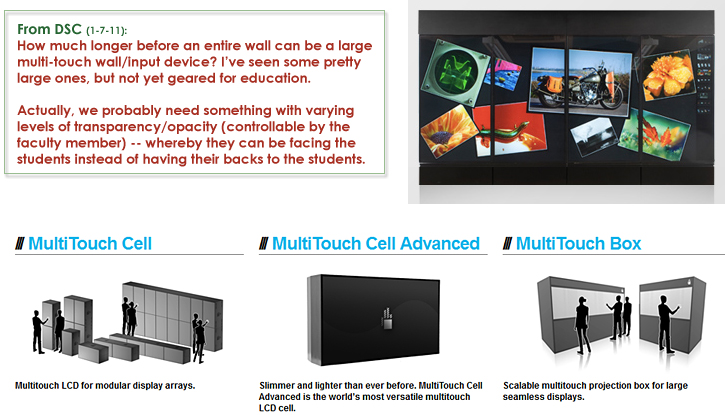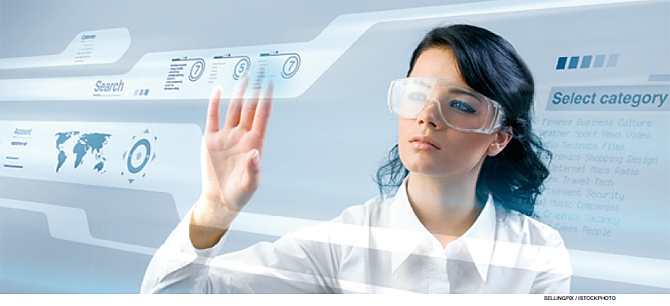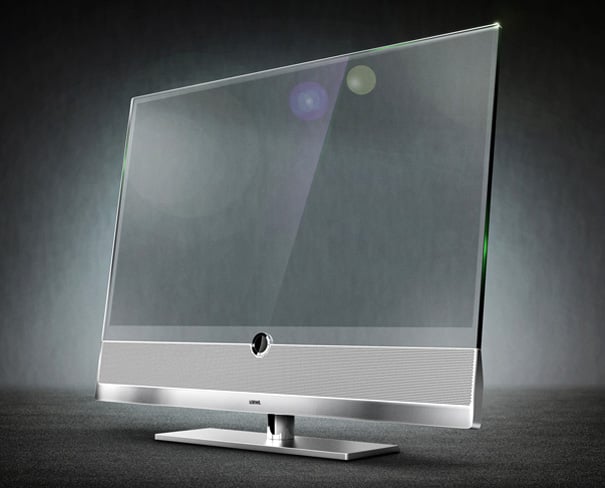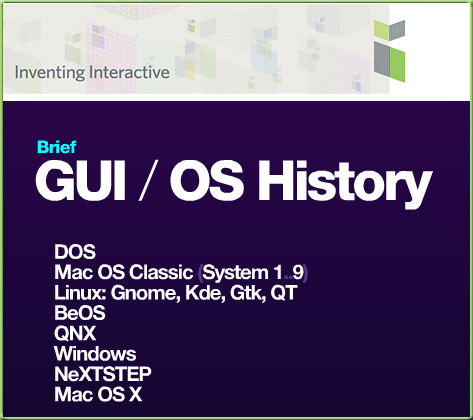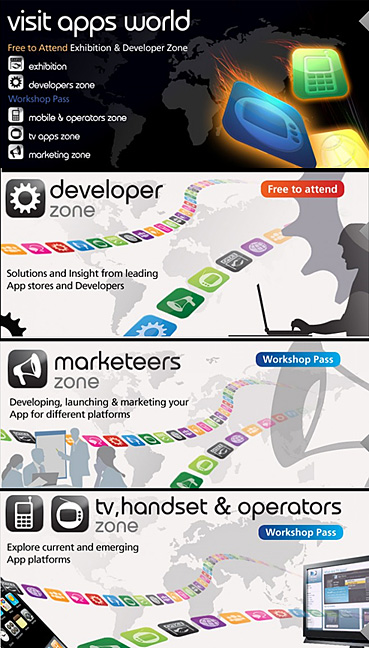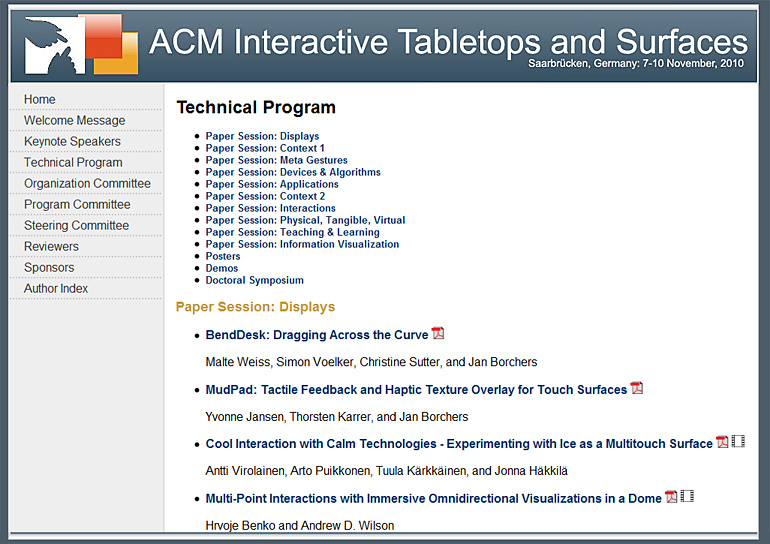iPads, iPod Touches, and iPhones as Assistive Technology in Education — from Tech & Learning




iPads, iPod Touches, and iPhones as Assistive Technology in Education — from Tech & Learning
Adobe Museum of Digital Media announces new exhibition: John Maeda: Atoms + Bits = the neue Craft (ABC) — from finance.yahoo.com
.
.
SAN JOSE, Calif.–(BUSINESS WIRE)– The Adobe Museum of Digital Media (www.adobemuseum.com) is pleased to announce its second exhibition, John Maeda: Atoms + Bits = the neue Craft (ABC), on view March 23 to Dec. 31, 2011. The exhibition is a digital representation of Maeda, president of the Rhode Island School of Design (RISD), leading an interactive lecture on how artists are connecting the worlds of digital creativity and analog (or handcrafted) creativity. Titled Atoms + Bits = the neue Craft (ABC), the lecture underscores the mission of the AMDM to provide an interactive venue for presenting digital media works as well as providing a forum for expert commentary on how digital media influences culture and society.
According to Maeda, “Computers let us imagine digitally what we once could only validate by handcraft in physical form – the infinite malleability and reusability of bits have forever changed the creative process. But just as it took Icarus to first imagine human flight by carefully observing how birds can fly, digital tools have relied on many of the original tools and media used by artists in the pre-digital world.” Maeda sees the thread that runs between the tools of physical art making – such as pens, brushes and pigment – and the way new media has co-opted many of the same tools to manipulate bits in digital art. Through the exhibition, he examines the history of linking analog and digital creativity within his own work and the works of others.
Computer ties human as they square off on ‘Jeopardy!’ — from CNN.com
.
.From DSC:
To be clear, I celebrate what the LORD has created and given to us in our amazingly-complex minds! I do not subscribe to the idea that robots are better than humans or that technologies are to be glorified and that technologies will save the world — not at all. (In fact, I have some concerns about the havoc that could easily occur if certain technologies wound up in the wrong hands — with those who have no fear of the LORD and who have massive amounts of pride…with hearts of stone.)
Getting back to my point…
The phenomenon that Christensen, Horn, and Johnson describe in Disrupting Class continues to play out in higher education/K-12. The innovations are mainly happening outside the face-to-face T&L environments.
Also see:
.
Addendum on 1-20-11:
The future of the TV is online — from telegraph.co.uk
Your television’s going to get connected, says Matt Warman
.
From DSC:
I post this here — with higher ed included in the tags/categories — because if the trend within K-12 continues (i.e. that of using such technologies as the iPad, digital textbooks, mobile learning devices, etc.), students’ expectations WILL be impacted. When they hit our doorsteps, they will come with their heightened sets of expectations. The question is, will we in higher ed be ready for them?
The iPad—Breaking new ground in Special Education — from District Administration.com by Marion Herbert
Apple’s iPad has received an unanticipated reaction from the autistic community.
From DSC:
Below are some notes and reflections after reading Visions 2020.2: Student Views on Transforming Education and Training Through Advanced Technologies — by the U.S. Department of Commerce, U.S. Department of Education, and NetDay
Basic Themes
Several recurring words jumped off the page at me, including:
Here are some quotes:
Math and reading were often cited specifically as subjects that might benefit from the use of learning technologies. (p. 5)
No concept drew greater interest from the student responders than some sort of an intelligent tutor/helper. Math was the most often mentioned subject for which tutoring help was needed. Many students desired such a tutor or helper for use in school and at home. (p. 17)
…tools, tutors, and other specialists to make it possible to continuously adjust the pace, nature and style of the learning process. (p.27)
So many automated processes have been built in for them: inquiry style, learning style, personalized activity selection, multimedia preferences, physical requirements, and favorite hardware devices. If the student is in research mode, natural dialogue inquiry and social filtering tools configure a working environment for asking questions and validating hypotheses. If students like rich multimedia and are working in astronomy, they automatically are connected to the Sky Server which accesses all the telescopic pictures of the stars, introduces an on-line expert talking about the individual constellations, and pulls up a chatting environment with other students who are looking at the same environment. (p.28)
— Randy Hinrichs | Research Manager for Learning Science and Technology | Microsoft Research Group
From DSC:
As I was thinking about the section on the intelligent tutor/helper…I thought, “You know…this isn’t just for educators. Pastors and youth group leaders out there should take note of what students were asking for here.”
First mock-ups of the final table! — from iphonetable.blogspot.com; originally from DVICE.com
.
Symposium on Progress in Information and Communication Technology (SPICT’10)
Conference date: 12-13 Dec,2010
Conference venue: The Royale Bintang, Kuala Lumpur
Conference country: Malaysia
SPICT’10 aims to bring together scientists, industry practitioners and students to exchange the latest fundamental advances and trends, and identify emerging research topics in the field of information and communication technology.
Activities:
* Agent & Multi-agent Systems
* Antennas & Propagation
* Artificial Intelligence
* Bioinformatics & Scientific Computing
* Business Intelligence
* Communication Systems and Networks
* Complex Systems: Modeling and Simulation
* Computer Vision
* Database and Application
* Geographical Information Systems
* Grid and Utility Computing
* Image Processing
* Information indexing & retrieval
* Information Systems
* Intelligent Systems
* Internet Technology
* Knowledge Management
* Mobile Communication Services
* Multimedia Technology and Systems
* Natural Language Processing
* Network Management and services
* Ontology and Web Semantic
* Optical Communications and Networks
* Parallel and Distributed Computing
* Pattern Recognition
* Pervasive Computing
* Real-Time and Embedded Systems
* Remote Sensing
* Robotic Technologies
* Security and Cryptography
* Sensor Networks
* Service Computing
* Signal Processing
* Software Engineering
* Strategic Information Systems

